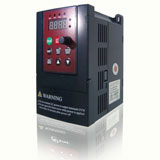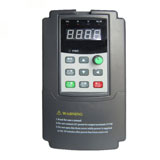String and central inverters
You know, I've thinking about the "Single Point of Failure" argument against string and central... and it really just doesn't add up that micro manufacturers would promote multiple points of failure vs single point in these types of systems...
Think of a refrigerator... even though storing certain foods at different temps is better, you don't have a bunch of little refrigerators each set to optimal. You knowingly have one big single point of failure, a Refrigerator/Freezer combo, and when it breaks you just fix it. Minimal downtime, minimal loss. It would cost more to have a bunch of little ones, and isn't practical for most. Just for some niche apps (say vaccine storage) where the minutia matters, but not generally what the majority of the market needs.
What if some company came out of nowhere and started promoting micro-fridges for optimal food storage, making claims of better performance, higher system efficiency, no single point of failure... and new people getting into the fridge game, saw all the marketing materials, and a big booth at the refrigerator trade shows, and because of that believed that company knew what it was talking about, and believed that a bunch of micro-fridges are absolutely the way to go... so they created a little army of people out there pedaling micro-fridges to people who don't know any better, even though that company never made a dime on a unit it sold, and then it went public, which didn't go so well but even still they got more money to tell more people?
I get that Micro's have some unique benefits, like module level data & shading scenarios, but most people don't need this level of granularity period, and then certainly not for the higher all-in cost.
I have String and Micro's both on my roof... honestly, I really liked the module level monitoring for about a week... then I stopped checking it because who has the time? When I'm curious, I like to see daily and hourly production from the whole system, and when I'm more curious I check the String and Micro systems individually. Both come through the Sunny Portal, and I can check them easily on my Sunny Portal Iphone App, simple, cool, never a bother. I hear so often from customers and end users that micro coms from the existing players' is a hassle. My SB3000HF-US is sweet, wireless coms to a BT Webbox that's plugged in to my router... zero issues.
Although I am beginning to wish I waited for the SB3000TL-US, Transformer-less (light & efficient), AFCI, dual MPPT (Accommodates different string lengths & technologies, and has monitoring on each string/channel), direct Ethernet, wide MPPT window, and EMERGENCY POWER SUPPLY (EPS)! This is a connection to a dedicated switch and outlet, that can actually make use of the solar on your roof even when the grid goes down. For charging cellphones, laptops, other coms, etc. WITHOUT batteries. How cool is that?
These TL's are the highest efficiency, sickest inverter solution residential PV systems have ever seen, hands down... & believe me I'm a critic too. Honestly, think about it... You are burying a bunch of devices that ARE, and always will be, reasonably failure prone, under mounted solar modules. Just from an O&M standpoint alone... see the other pole. You really can tell which companies will, or want to, stick around to support their systems well into the future based on their inverter choices. It really does matter to the industry that folks understand macro, not just micro.
Think of a refrigerator... even though storing certain foods at different temps is better, you don't have a bunch of little refrigerators each set to optimal. You knowingly have one big single point of failure, a Refrigerator/Freezer combo, and when it breaks you just fix it. Minimal downtime, minimal loss. It would cost more to have a bunch of little ones, and isn't practical for most. Just for some niche apps (say vaccine storage) where the minutia matters, but not generally what the majority of the market needs.
What if some company came out of nowhere and started promoting micro-fridges for optimal food storage, making claims of better performance, higher system efficiency, no single point of failure... and new people getting into the fridge game, saw all the marketing materials, and a big booth at the refrigerator trade shows, and because of that believed that company knew what it was talking about, and believed that a bunch of micro-fridges are absolutely the way to go... so they created a little army of people out there pedaling micro-fridges to people who don't know any better, even though that company never made a dime on a unit it sold, and then it went public, which didn't go so well but even still they got more money to tell more people?
I get that Micro's have some unique benefits, like module level data & shading scenarios, but most people don't need this level of granularity period, and then certainly not for the higher all-in cost.
I have String and Micro's both on my roof... honestly, I really liked the module level monitoring for about a week... then I stopped checking it because who has the time? When I'm curious, I like to see daily and hourly production from the whole system, and when I'm more curious I check the String and Micro systems individually. Both come through the Sunny Portal, and I can check them easily on my Sunny Portal Iphone App, simple, cool, never a bother. I hear so often from customers and end users that micro coms from the existing players' is a hassle. My SB3000HF-US is sweet, wireless coms to a BT Webbox that's plugged in to my router... zero issues.
Although I am beginning to wish I waited for the SB3000TL-US, Transformer-less (light & efficient), AFCI, dual MPPT (Accommodates different string lengths & technologies, and has monitoring on each string/channel), direct Ethernet, wide MPPT window, and EMERGENCY POWER SUPPLY (EPS)! This is a connection to a dedicated switch and outlet, that can actually make use of the solar on your roof even when the grid goes down. For charging cellphones, laptops, other coms, etc. WITHOUT batteries. How cool is that?
These TL's are the highest efficiency, sickest inverter solution residential PV systems have ever seen, hands down... & believe me I'm a critic too. Honestly, think about it... You are burying a bunch of devices that ARE, and always will be, reasonably failure prone, under mounted solar modules. Just from an O&M standpoint alone... see the other pole. You really can tell which companies will, or want to, stick around to support their systems well into the future based on their inverter choices. It really does matter to the industry that folks understand macro, not just micro.

 High quality frequency inverters for electric motor speed controls in energy-saving solutions.
High quality frequency inverters for electric motor speed controls in energy-saving solutions.

